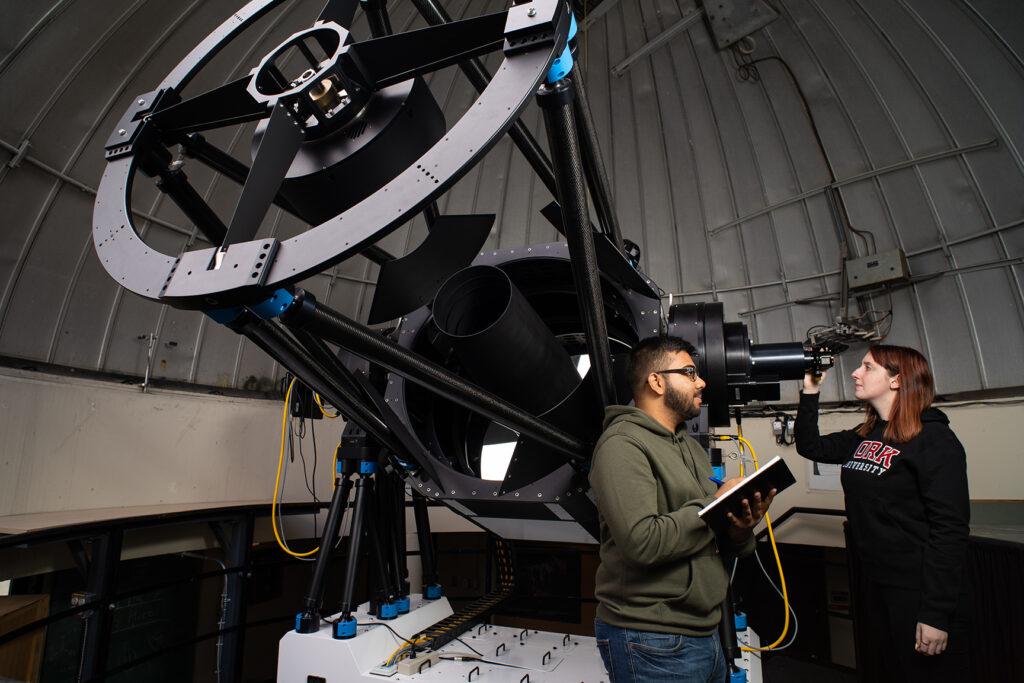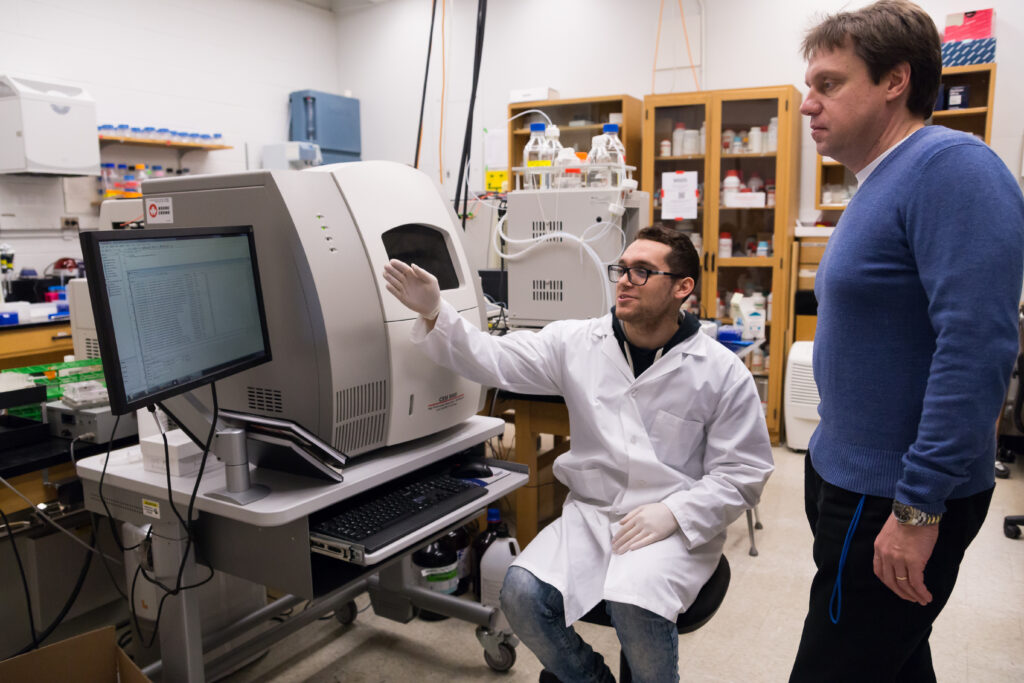The Graduate Program in Physics and Astronomy focuses on a wide range of study and research in the following areas: Astronomy & Astrophysics, Atomic, Molecular & Optical Physics, Biological Physics, Chemical & Condensed Matter Physics, Earth, Atmospheric, Space & Engineering (Planetary Physics), and High Energy & Particle Physics.
In the Department of Physics & Astronomy, research is conducted in the general areas of astronomy and astrophysics, atomic, molecular and optical physics; biological physics; chemical and condensed matter physics; earth, atmosphere, space science and engineering; and high energy and particle physics. This research forms a major part of the Graduate Program in Physics & Astronomy, which is structured to permit students to select either a specialized research-oriented activity within the areas of Physics and Astronomy listed above, or to choose a more interdisciplinary program in collaboration with industry or the interdisciplinary centres at York University in fields such as atmospheric chemistry, mass spectrometry and vision research.
Research Areas
We welcome you to explore the fascinating research experts in the various categories below. Visit our website for additional information about the Physics and Astronomy Department.
We conduct research in six fields. Click on your field of interest to learn who does what.

Astronomy and Astrophysics
Astronomers remotely study systems and phenomena beyond the Earth, normally by examining emitted, transmitted, or reflected light. Research spans space and time, from planets to stars to galaxies and aggregates thereof, from interplanetary to interstellar to intergalactic media, from the cosmic web to the Universe to the multi-verse. Most astronomers today use knowledge about physics in their attempts to understand the workings of the cosmos, and in that sense, they are astrophysicists, too. Consequently, astronomical research often leads to new insights into physics, as was the case with the discoveries of dark matter and dark energy.
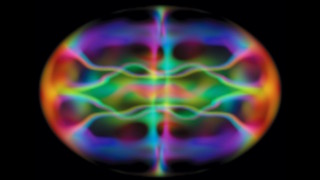
Atomic, Molecular, and Optical Physics
Atomic, Molecular, and Optical (AMO) Physicists study phenomena on the scale of one to a few atoms or molecules, interactions between which are governed by electric and magnetic forces from charged particles (electrons and protons). Besides determining how atoms and molecules and their antimatter counterparts function, they use atomic or molecular systems to measure fundamental constants of nature, such as the fine structure constant governing the strength of electromagnetic interactions. The term “optical physics” is synonymous with research in the field because of the role played by lasers, which are used to probe atoms and molecules on the quantum scale with exquisite precision.
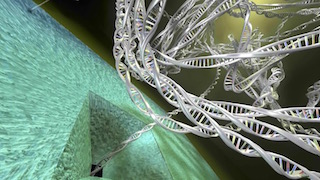
Biological Physics
Biological Physicists, also known as Biophysicists, apply the principles and techniques of physics to study living things and how they function. At a macroscopic level, biophysicists are exploring how organisms develop and how they see, hear, taste, feel, think, and move. At a microscopic level, biophysicists are studying the factors controlling how cells move and interact, how they harness and process energy, and how they react to external physical stimuli. To facilitate their explorations, biophysicists develop new or improved techniques of imaging, diagnosis, and analysis, one particularly well-known example being Magnetic Resonance Imaging (MRI).
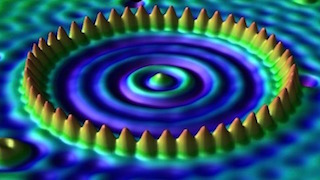
Chemical and Condensed Matter Physics
Chemical and Condensed Matter Physicists study very large collections of atoms or molecules in which the interactions between constituents are strong. Solids and liquids are prime examples, within which interactions are governed by electric and magnetic fields. Given the potential for practical applications, many researchers engage in the development and characterization of new materials. Technologically important processes include conduction in metals, non-conduction in insulators, and semiconduction, the explanations for which require an understanding of the behaviour of matter in the quantum realm.
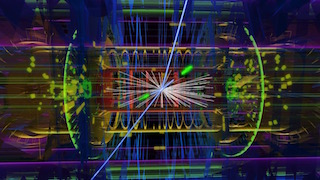
High Energy and Particle Physics
High Energy and Particle Physicists study the most basic constituents of matter and antimatter and the forces that govern their interactions. They are responsible for developing the Standard Model that pinpoints leptons and quarks as the basis of all normal matter in the Universe and that identifies gauge bosons as carriers that mediate three of the four forces of nature. Enormous accelerators are used to create particles that normally do not occur in everyday life, but which existed in the earliest stages of the development of the Universe after the Big Bang. Much work remains to be done: dark matter and dark energy remain enigmas, the predominance of matter over antimatter can’t be explained, and gravity resists unification.

Planetary Physics
Planetary Physicists study the Solar System and its constituents as well as exoplanetary systems. Many are astronomers, too, in the sense that studies are conducted remotely. However, by employing spacecraft as probes, planetary physicists can reach out and touch many bodies in the Solar System, and thereby conduct astrochemical and astrogeological studies not possible in other astronomical disciplines. A major thrust of planetary research is to identify environments suitable for the development of life and, in turn, to detect evidence of life in the Solar System and beyond.
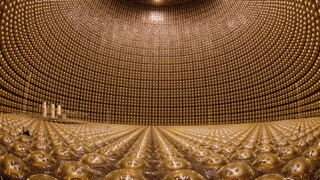
Experimental Research
Experimental Researchers, known as experimentalists in physics and observers in astronomy, carry out and utilize measurements to quantify the properties of nature and to evaluate the viability of hypotheses about the workings of nature. For example, experimental atomic physicists have developed instrumentation and techniques to create and trap antihydrogen (a positron bound to an antiproton) to determine whether or not its energy levels are spaced identically to those of normal hydrogen, as predicted by the Standard Model. Experimental particle physicists used the Large Hadron Collider to detect the Higgs boson, the existence of which had been postulated to explain how subatomic particles have acquired mass. Observational astronomers employed telescopes to determine accurate distances to supernovae in distant galaxies, thereby revealing that the expansion of the Universe is accelerating and that the predominant constituent of the Universe is dark energy.

Theoretical Research
Theoretical Researchers, better known as theoreticians, endeavour to develop conceptual frameworks for understanding the workings of nature that are either revealed or testable by experimentation and measurement. For example, theoretical particle physicists have attempted to reproduce the behaviour of dark matter in galaxies by hypothesizing the existence of a fundamental particle that is self-interacting. Theoretical astrophysicists have devised a magnetohydrodynamic model to explain how a supermassive black hole at the centre of a galaxy is able to eject jets of material accreted from its surroundings. Theoretical biophysicists have made analogies with electrical circuits to understand how neurons in the brain interact.
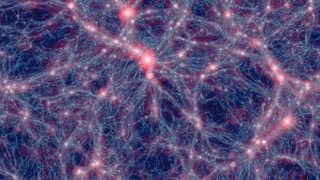
Computational Research
Computational Researchers develop and use software that implements known physical laws to model nature or simulate the workings of nature, thereby making possible approaches to problems that are analytically intractable. Also, some computational researchers develop and implement algorithms for exploring “big data”. For example, computational particle physicists have studied the interactions of quarks in hadrons to identify how much mass is attributable to energy and to predict the existence of multi-quark particles that are stable but not yet discovered. Computational atomic and molecular physicists have guided experimental research by evaluating the cross-section for interaction from simulations of millions of events with a wide range of initial conditions. Computational astronomers “created” the current Universe by gravitationally evolving from the Big Bang to the present cube containing a billion particles of dark and normal matter. Then, they “explored” the simulated Universe to identify galaxies and study their large-scale distribution.

Learn More
The Graduate Program in Physics & Astronomy at York is an exciting environment to pursue innovative, socially engaging, career-ready education. Contact our Graduate Program Assistant to learn more.

